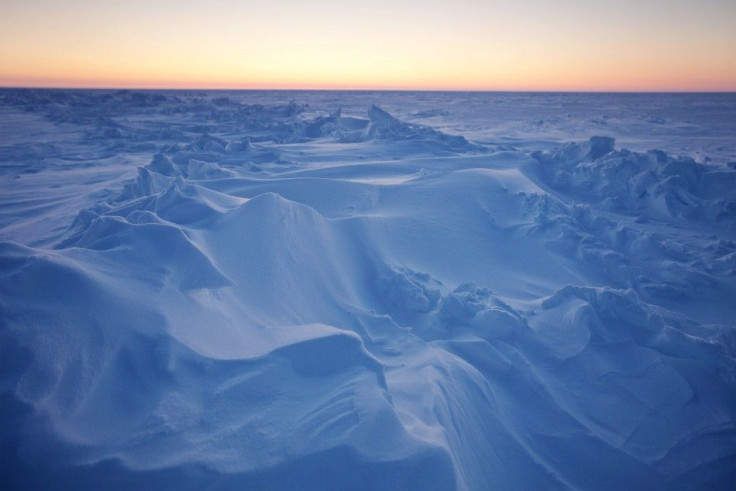New ConocoPhillips and Shell Arctic Oil Permits Raising Alarms

Alaskan environmentalists are sounding the alarm bells this week, responding to two major oil industry victories in a state that has been a recurring flash point between environmental groups, legislators and the giants of petroleum exploration.
The latest news to stir the seas came Monday, when ConocoPhillips reported it will have access to the Alaskan National Petroleum Reserve. That followed Royal Dutch Shell's announcement last Friday that its plan to drill for oil in the Chukchi Sea was conditionally approved by the Bureau of Ocean Energy Management.
Both projects are planned in environmentally sensitive areas of the state.
We are not ready, Lois Epstein, Arctic Program Director for The Wilderness Society told the International Business Times, noting the Arctic waters are known for harboring humpback whales and polar bears, and that a major oil spill in the region would be catastrophic.
Epstein also cited the lack of scientific study on environmental impacts, the absence of planned ecological exclusion zones to protect the region's ecosystem, and the dearth of knowledge scientists have about how to clean up any potential Arctic offshore oil slicks. Clean up and containment strategies that might work elsewhere, she noted, become ineffective when dealing with ice cover and polar weather.
We are not so desperate that we need to go there, she added.
The plan approved this week by the Army Corps of Engineers, which has jurisdiction over federal water ways, gives ConocoPhillips permission to build a drill pad, six miles of road, an above-ground pipeline and four bridges on the Arctic Coastal Plain in the oil reserve.
Last Friday, the Bureau of Ocean Energy Management, which is part of the Department of the Interior, gave Shell its conditional stamp of approval to drill offshore in the Chukchi Sea. Shell must satisfy further regulations and commitments before its plan to drill six exploration wells in the area commences in the summer of 2012.
The Bureau, however, only plans to conclude a comprehensive environmental study of the area, which it is currently conducting alongside the University of Texas, by 2016.
Environmentalist fear that oil prospecting in the region will lead to oil discoveries -- which will prompt greater interest in the Arctic oil likely found within such sensitive and hard to reach areas as ice-locked seas -- further endangering regional ecosystems.
Between the Exxon Valdez spill of 1989, and two spills caused by ruptured BP pipelines this decade, the Arctic has seen its fair share of oil spills.
Epstein, who currently serves on a federal offshore drilling advisory committee to the Department of the Interior, said as difficult as it was for authorities to clean up the BP spill last year, the difficulty will only be magnified if the same type of event were to take place in the arctic.
It's pathetic that we are doing the same things we were doing [to clean up oil spills] with the Exxon-Valdez spill, Epstein said.
Dan Ritzman, the program director with the Alaskan Sierra Club, said he will be trying to prevent oil drilling from happening in the Arctic Ocean, period.
The BOEM's greenlight for Royal Dutch Shell's plan to drill six exploratory wells in the Chukchi Sea comes at an ironic time, Ritzman said, considering the capsizing of Russian oil rig Kolskoye in an arctic storm earlier this week.
Epstein said her concerns are only aggravated by the fact Shell has had two spills this week alone.
In an online presentation on Shell's website, the company said it is confident it can drill in the region without incident, citing its previous experience.
Shell has gone to great lengths to make sure a worst case scenario, such as an oil spill, never takes place, the presentation stated. The document, with an appended video, stressed that if a spill happens, on-site response crews would be able to begin recovering spilt oil within one hour of the event.
The company's risk-abatement strategies include placing multiple blowout preventers on the well, drilling relief wells, and having resources -- such as chemical dispersants and controlled burn equipment -- in case a spill does happen. Ice breakers will also be available to keep waterways clear of ice.
For the Army Corps of Engineers, ConocoPhillips' entrance into the Petroleum Reserve follows a year-long review process, and in a 134-page decision, required the oil company to use the least environmentally damaging practicable alternatives as required by law, according to the release dated Dec. 19.
[Monday's] decision is entirely consistent with the mission of the Corps of Engineer's Regulatory Program, which is to protect the Nation's aquatic resources while allowing reasonable development, said Kevin Morgan, the corps' Alaskan District regulatory chief. It's indicative of a program that is fair, flexible and balanced.
© Copyright IBTimes 2024. All rights reserved.





















